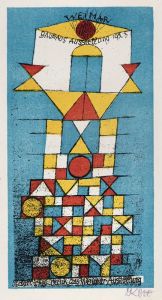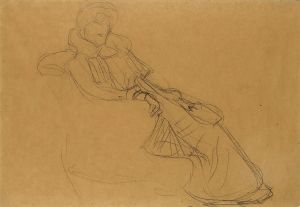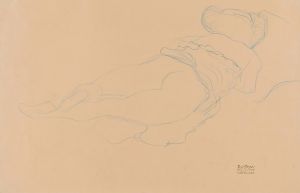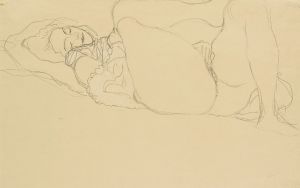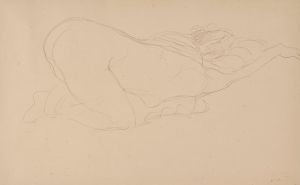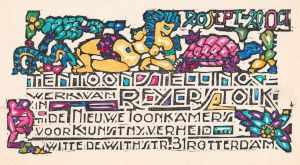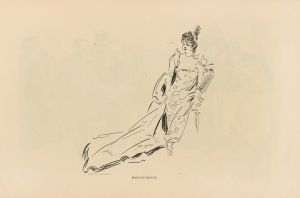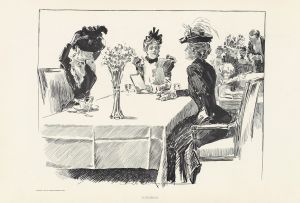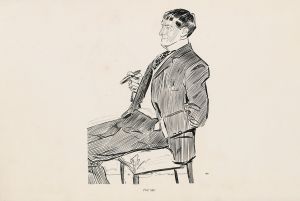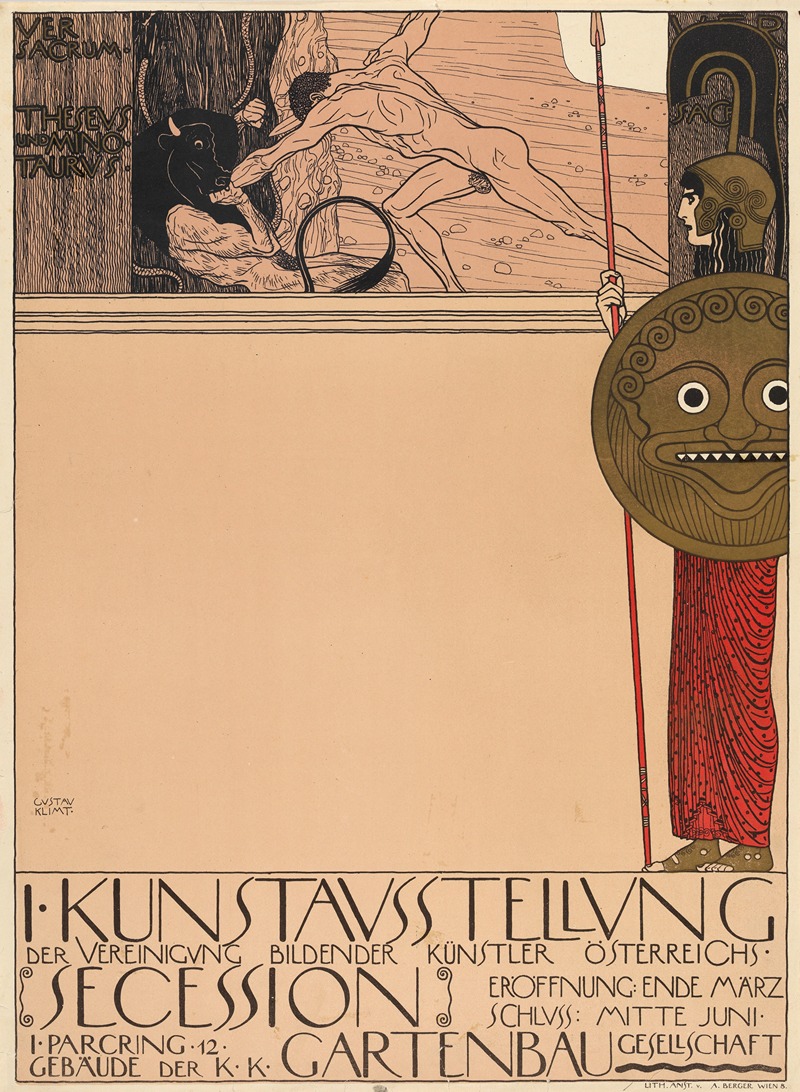
Plakat der 1. Ausstellung der Secession
A hand-painted replica of Gustav Klimt’s masterpiece Plakat der 1. Ausstellung der Secession, meticulously crafted by professional artists to capture the true essence of the original. Each piece is created with museum-quality canvas and rare mineral pigments, carefully painted by experienced artists with delicate brushstrokes and rich, layered colors to perfectly recreate the texture of the original artwork. Unlike machine-printed reproductions, this hand-painted version brings the painting to life, infused with the artist’s emotions and skill in every stroke. Whether for personal collection or home decoration, it instantly elevates the artistic atmosphere of any space.
The artwork Plakat der 1. Ausstellung der Secession (Poster for the 1st Exhibition of the Secession) was created by Austrian artist Gustav Klimt in 1898. This poster was designed to promote the inaugural exhibition of the Vienna Secession, an art movement co-founded by Klimt and other artists in 1897. The Secession sought to break away from the traditional academic art institutions of the time and to embrace modern, innovative approaches to art and design.
The poster is a striking example of the Secessionist style, characterized by its emphasis on flat, decorative elements, bold lines, and symbolic imagery. The central figure in the composition is Theseus, a hero from Greek mythology, depicted in a simplified, almost abstract form. He is shown in the act of slaying the Minotaur, a mythical creature with the body of a man and the head of a bull. This scene is a metaphor for the Secessionists' struggle against the "monstrous" constraints of traditional art and their pursuit of artistic freedom.
Above Theseus, the goddess Athena, a symbol of wisdom and the arts, is portrayed in a stylized manner, overseeing the hero's victory. The use of mythological references reflects the Secessionists' interest in classical themes, reinterpreted through a modern lens. The composition is framed by a decorative border, and the text is integrated into the design, showcasing the movement's commitment to unifying art and typography.
The poster was controversial at the time of its release due to its unconventional style and the perceived nudity of the figures, which some critics considered inappropriate. Despite the criticism, the poster became an iconic representation of the Vienna Secession and Klimt's early work in the movement.
Today, Plakat der 1. Ausstellung der Secession is regarded as a significant piece of graphic design and an important historical artifact of the Vienna Secession. It exemplifies the group's innovative approach to art and their desire to challenge the artistic norms of their era.






